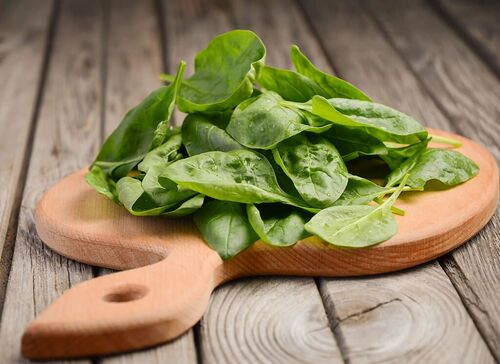Growing Spinach

Spinach is one of the most satisfying cool-weather crops to grow, producing large yields of vitamin-rich, dark green leaves that are excellent for salads and for cooking. Growing spinach is not difficult. Put the seeds in the ground and nature does the rest! Do you want to grow your own spinach? It starts with the spinach seeds.
Sowing spinach
For a summer crop, spinach can be sown from early spring to the middle of June. Sow seeds 2.5cm apart in trenches 1cm deep, cover and water. New rows should be about 30cm apart. For a constant supply, try sowing a new row every three weeks. For leaves to pick over winter, sow spinach in late summer and early autumn.
Harvesting spinach
Harvest when leaves reach the desired size. Don’t wait too long to harvest or wait for larger leaves; bitterness will set in quickly after maturity.
The whole plant can be harvested at once, and cut at the base, or leaves may be picked off plants one layer at a time, giving inner layers more time to develop. Either harvesting method will encourage regrowth as long as the growing point is not damaged during the harvesting.
Nutritional value spinach
Spinach is rich in antioxidants, vitamins A, C, E, K and B2, magnesium, iron, calcium, folic acid, zinc, protein, selenium and omega-3 fatty acids. This vegetable contains the highest amount of nutrients of all vegetables. Vitamin A is very good for the eyes. And spinach protects your brain from aging. Spinach is also high in folic acid, which is especially important for pregnant women. Folic acid is important for the early development of the unborn child.
Does spinach makes you stronger?
Popeye had it right: spinach really does make you stronger!
Just one serving of leafy greens a day of fresh spinach can boost muscle strength, according to a Swedish study. Researchers say the cartoon icon’s favorite food can even protect older people from frailty.



